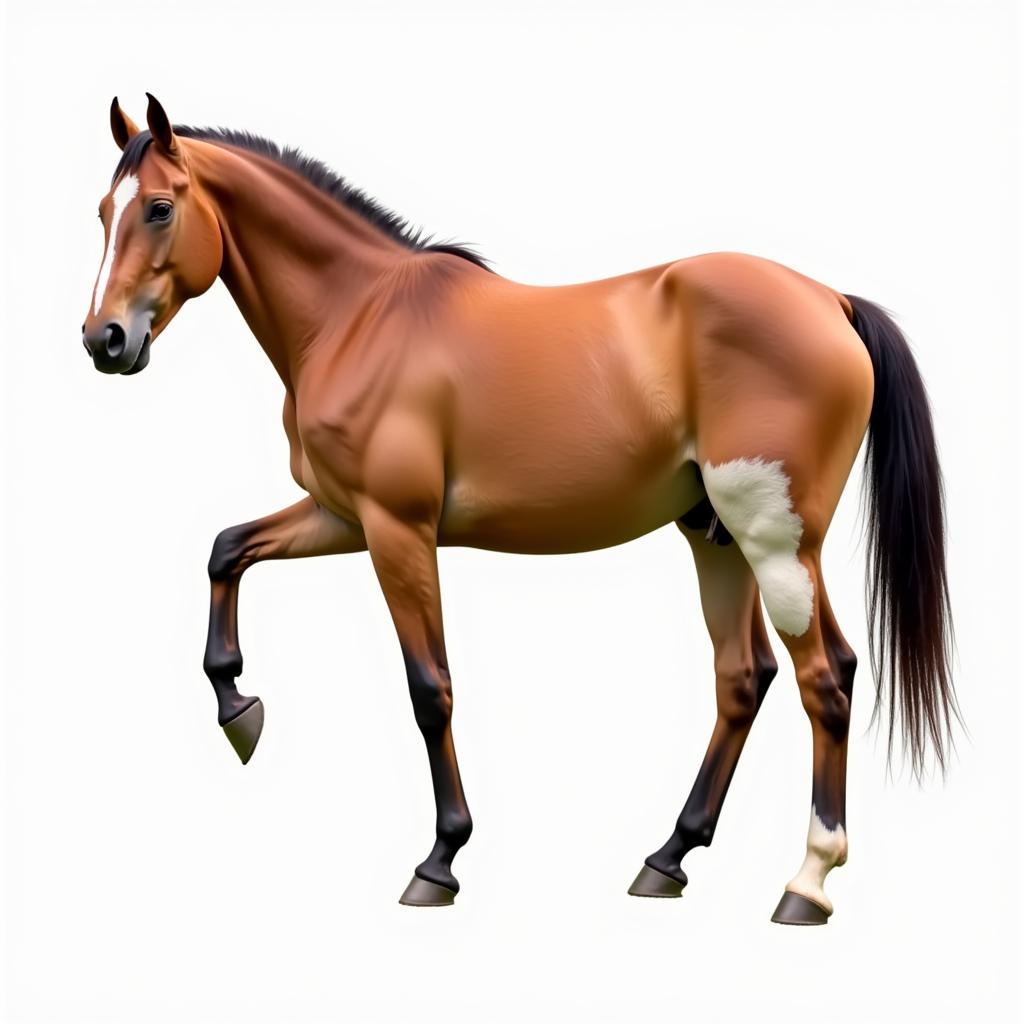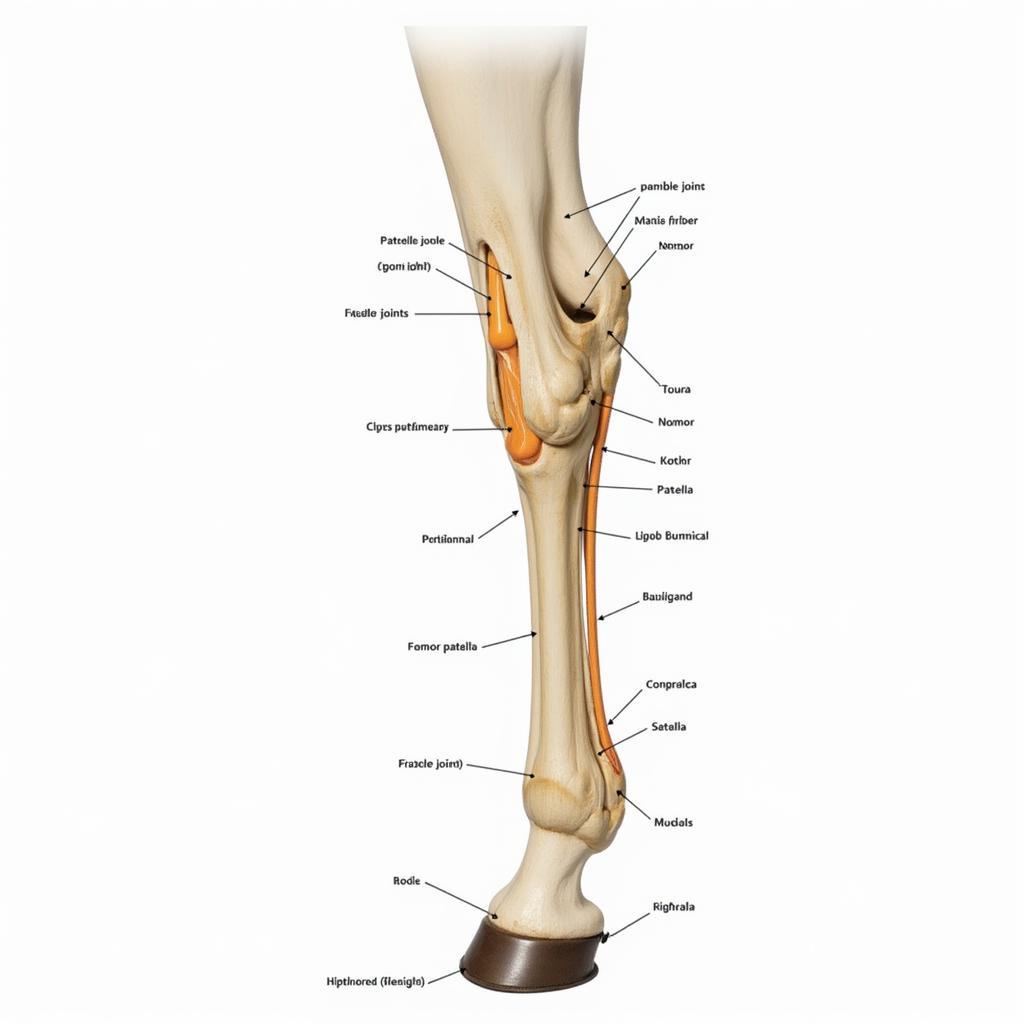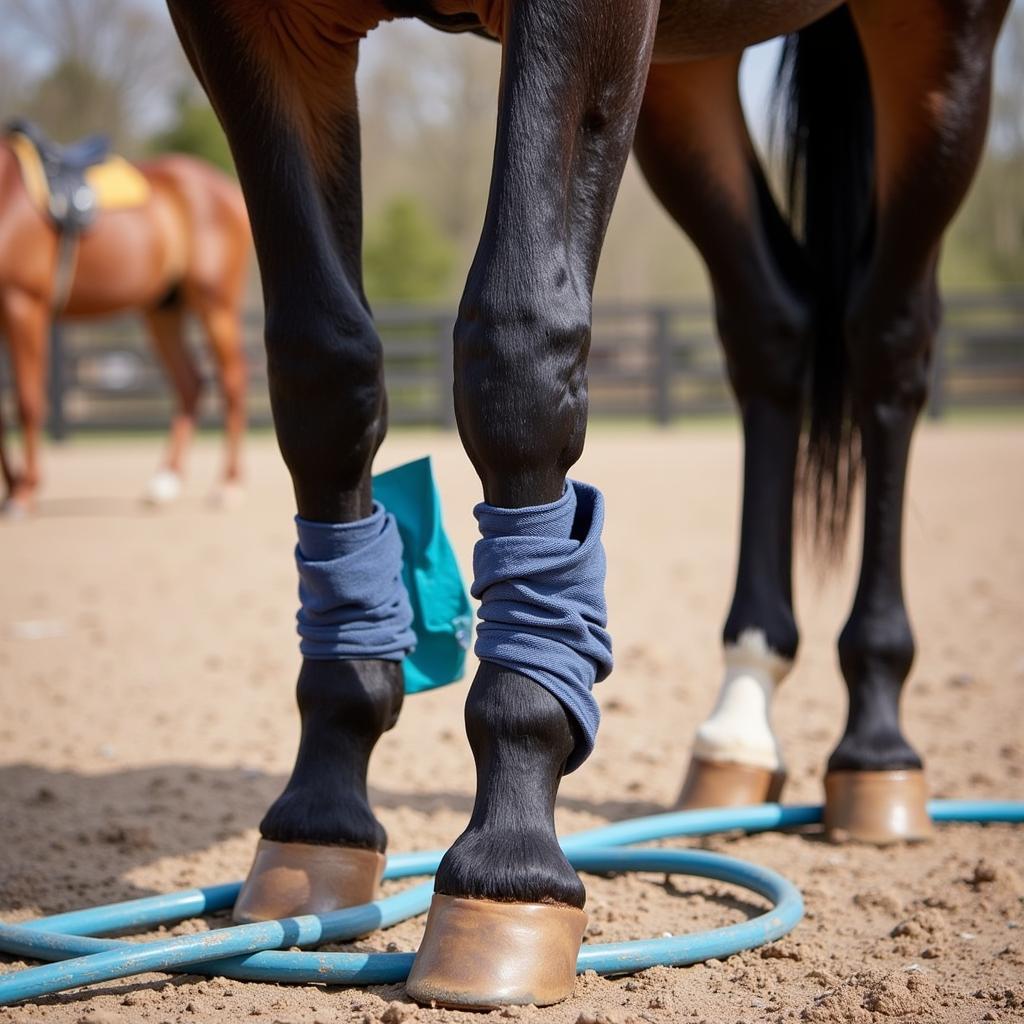A Horse With Stifle Issues can present a significant challenge for any owner. From subtle lameness to more obvious signs of discomfort, stifle problems can impact a horse’s performance and overall well-being. This article dives deep into the complexities of equine stifle issues, providing valuable insights into causes, diagnosis, treatment, and management strategies.
Recognizing Stifle Problems in Your Horse
Stifle issues in horses can manifest in various ways, making early detection crucial. Some common signs include intermittent lameness, especially after exercise, swelling around the stifle joint, difficulty flexing or extending the leg, a clicking or popping sound during movement, and dragging the toe. The horse may also exhibit reluctance to turn or change direction. These symptoms can range from mild to severe, and it’s essential to consult a veterinarian for accurate diagnosis and treatment.
 Horse Showing Stifle Lameness
Horse Showing Stifle Lameness
Common Causes of Stifle Issues
Several factors can contribute to stifle problems in horses. These include traumatic injuries, such as kicks or falls, which can damage the ligaments or cartilage within the joint. Overexertion, particularly in disciplines requiring quick turns and stops, can strain the stifle. Developmental issues, like upward fixation of the patella, are more common in young horses and can cause the stifle to lock in extension. Osteoarthritis, a degenerative joint disease, can also affect the stifle, leading to pain and stiffness. Additionally, certain conformational flaws can predispose a horse to stifle problems.
 Equine Stifle Anatomy Diagram
Equine Stifle Anatomy Diagram
Diagnosing and Treating a Horse with Stifle Issues
Diagnosing stifle problems requires a thorough veterinary examination, including physical palpation, manipulation of the joint, and often diagnostic imaging such as X-rays or ultrasound. These tests help identify the specific structures involved and the extent of the damage. Treatment options vary depending on the diagnosis and can range from conservative management, such as rest and anti-inflammatory medications, to more invasive procedures like surgery. stifle of a horse provides further information on the anatomy and function of this crucial joint.
What are the treatment options for upward fixation of the patella? Treatment for upward fixation of the patella often involves a combination of conservative management and potentially surgery, depending on the severity of the condition.
What diagnostic tests are used to evaluate stifle problems? Veterinarians typically utilize physical exams, palpation, manipulation tests, and imaging techniques like x-rays and ultrasounds to diagnose stifle issues.
How can I manage a horse with chronic stifle pain? Managing chronic stifle pain often involves a multi-modal approach, including medications, controlled exercise, joint supplements, and alternative therapies like acupuncture.
Managing a Horse with Long-Term Stifle Issues
For horses with chronic stifle problems, long-term management is essential to maintain comfort and function. This may involve regular exercise to strengthen supporting muscles, controlled turnout to minimize stress on the joint, and the use of joint supplements to support cartilage health. horse patella can offer additional insights into managing patella-related stifle problems. blistering stifles in horses discusses a more aggressive treatment option.
 Horse Receiving Stifle Therapy
Horse Receiving Stifle Therapy
“Consistent and appropriate exercise is paramount for maintaining stifle health in horses, especially those prone to issues,” advises Dr. Emily Carter, DVM, specializing in equine sports medicine.
“Early intervention is key when dealing with stifle problems. The sooner a diagnosis is made and treatment begins, the better the prognosis,” adds Dr. James Miller, DVM, an equine orthopedic surgeon.
Conclusion
Dealing with a horse with stifle issues requires careful observation, prompt veterinary attention, and a commitment to long-term management. By understanding the causes, symptoms, and treatment options, owners can help their horses maintain a comfortable and active life. Remember, addressing stifle issues promptly can significantly improve your horse’s long-term prognosis. horse licking may be a sign of discomfort and should be investigated.
FAQ
-
What is the most common stifle injury in horses? Upward fixation of the patella is a common stifle issue, particularly in younger horses.
-
Can stifle problems be prevented? While not all stifle problems are preventable, maintaining proper conditioning, avoiding overexertion, and addressing conformational flaws can help reduce the risk.
-
How long does it take for a stifle injury to heal? Healing time varies depending on the severity of the injury and the chosen treatment method, ranging from weeks to months.
-
What are the signs of stifle pain in a horse? Signs can include lameness, swelling, clicking or popping sounds in the joint, and difficulty flexing or extending the leg.
-
When should I call a vet for a stifle issue? If you notice any signs of lameness or discomfort in your horse’s stifle, it’s crucial to consult a veterinarian promptly.
-
Are certain breeds more prone to stifle problems? Some breeds, like Quarter Horses and Thoroughbreds, may be slightly more predisposed to certain stifle conditions.
-
Can a horse with stifle issues still be ridden? This depends on the severity of the condition and the veterinarian’s recommendation. Some horses can continue to be ridden with modifications, while others may require rest. nose net for horses is unlikely to directly impact stifle issues.
For further assistance, please contact us at Phone: 0772127271, Email: [email protected] or visit us at QGM2+WX2, Vị Trung, Vị Thuỷ, Hậu Giang, Việt Nam. We have a 24/7 customer service team ready to help.